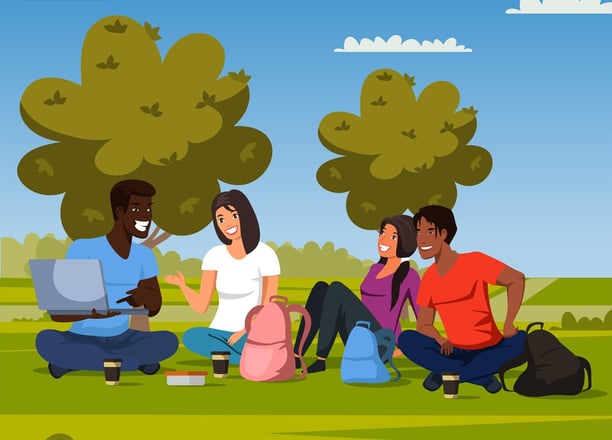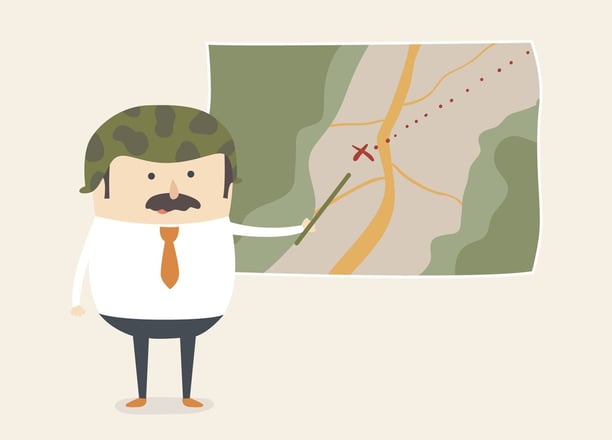Meeting Points
Establish clear locations for regrouping if separated. In an emergency or crisis, family members or group members may get separated due to confusion, chaotic conditions, or the nature of the situation. Establishing clear regrouping locations ensures that everyone knows where to go and how to reconnect, reducing stress and improving safety. Below is a comprehensive explanation of why regrouping locations are important and how to set them effectively.
HAVE AN EMERGENCY PLAN
12/21/20243 min read
Meeting Points
Establish clear locations for regrouping if separated. In an emergency or crisis, family members or group members may get separated due to confusion, chaotic conditions, or the nature of the situation.
Establishing clear regrouping locations ensures that everyone knows where to go and how to reconnect, reducing stress and improving safety. Below is a comprehensive explanation of why regrouping locations are important and how to set them effectively.


1. Why Regrouping Locations Are Essential
A. Minimize Panic
In a high-stress scenario, knowing there’s a predetermined meeting point helps reduce anxiety and confusion.
B. Ensure Safety
It allows separated individuals to head to a safe area instead of wandering aimlessly, which could increase exposure to danger.
C. Improve Communication
Physical regrouping locations act as a backup when phone networks or other communication systems fail.
D. Increase Efficiency
Having a designated spot saves time, preventing delays in rescue efforts or evacuations.
2. How to Choose Regrouping Locations
A. Factors to Consider
Proximity: Select locations close to commonly visited places (e.g., home, school, or workplace).
Safety: Choose secure areas that provide shelter and protection from potential threats.
Accessibility: Ensure that everyone in the group, including children, elderly, or disabled individuals, can easily reach the location.
Landmarks: Use easily identifiable and permanent landmarks like a large tree, statue, park, or community center.
Alternate Routes: Choose locations that can be reached through multiple paths in case one route is blocked or unsafe.
B. Types of Locations
Primary Location: A nearby spot for quick regrouping, such as the front yard, a local park, or a neighbour’s house.
Secondary Location: A farther location in case the primary area becomes unsafe, such as a community shelter or religious institution.
Emergency Location: A regional point for larger-scale evacuations, like a town square, government center, or another city.
3. Establishing Regrouping Protocols
A. Designate Specific Locations
Name the Spot Clearly: Use precise terms to avoid confusion, such as “the big oak tree in the park” or “the library parking lot.”
Mark the Location: If feasible, place a visual marker like a flag, ribbon, or chalk sign to make the spot easily recognizable.
B. Communicate to Everyone
Discuss the Plan: Ensure all family members know the locations and understand when and why to use them.
Provide Maps: Hand out printed maps with the regrouping points marked clearly.
C. Create a Sequence
Decide the order in which locations should be used. For example:
First, meet at the primary location.
If unsafe, move to the secondary location.
If the secondary is compromised, proceed to the emergency location.
4. Practice the Plan
Why Practice Matters
Builds Familiarity: Ensures everyone can navigate to the location even in stressful conditions.
Identifies Challenges: Reveals any obstacles that may arise while reaching the location, like blocked paths or transportation issues.
Increases Confidence: Practicing helps reduce hesitation and confusion during an actual emergency.
Practice Tips
Simulate Scenarios: Run drills simulating different types of emergencies like a fire, earthquake, or conflict.
Vary Conditions: Practice at different times of the day and in various weather conditions.
Test Communication: Use backup communication methods, such as written notes or pre-agreed signals, during practice.
5. Tips for Using Regrouping Locations
A. Coordinate Arrival
Use check-in times to confirm arrival. For example, if separated, agree to meet at the location after 30 minutes.
Leave a message or marker at the spot if you must move elsewhere (e.g., a note under a rock or a coded symbol).
B. Have a Backup Plan
If the location becomes inaccessible or compromised, set an alternative meeting point ahead of time.
Ensure everyone knows how to proceed to the next location without waiting too long.
6. Common Mistakes to Avoid
Unclear Locations: Choosing vague or temporary spots like “near the bus stop” can cause confusion.
No Backup Locations: Relying on a single point without alternatives can be problematic if that spot becomes unsafe.
Failure to Communicate: Not informing every family member of the plan can leave some unaware of what to do.
Neglecting Practice: A well-defined location is ineffective if group members haven’t practiced using it.
7. Examples of Regrouping Locations
For Home Emergencies: A neighbour’s house, a nearby park, or the corner of your street.
For School or Workplace Separation: The parking lot, a nearby coffee shop, or a public building like a library.
For Regional Crises: Designated evacuation shelters, city halls, or religious centers.
Plan for Multiple Locations: Have a primary, secondary, and emergency regrouping point.
Prioritize Safety and Accessibility: Ensure the locations are secure and reachable for all family members.
Communicate and Practice: Make sure everyone knows the plan and rehearses it to build confidence.
Stay Flexible: Be prepared to adapt if a regrouping location becomes unsafe or unreachable.
By establishing clear regrouping locations and practising their use, you increase your family’s ability to stay connected, safe, and calm during emergencies.






